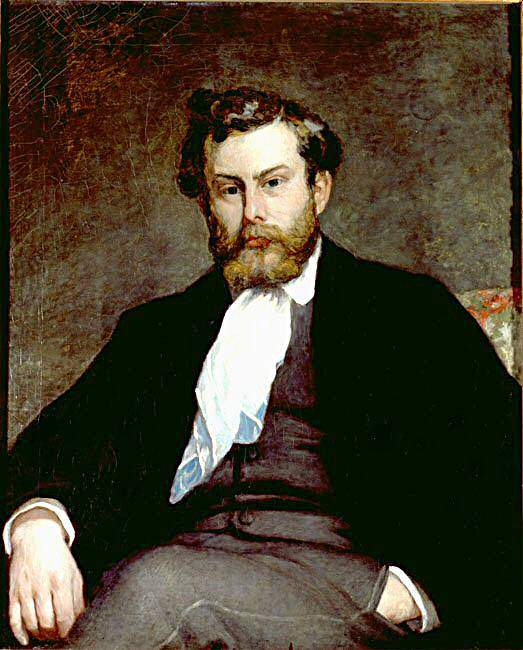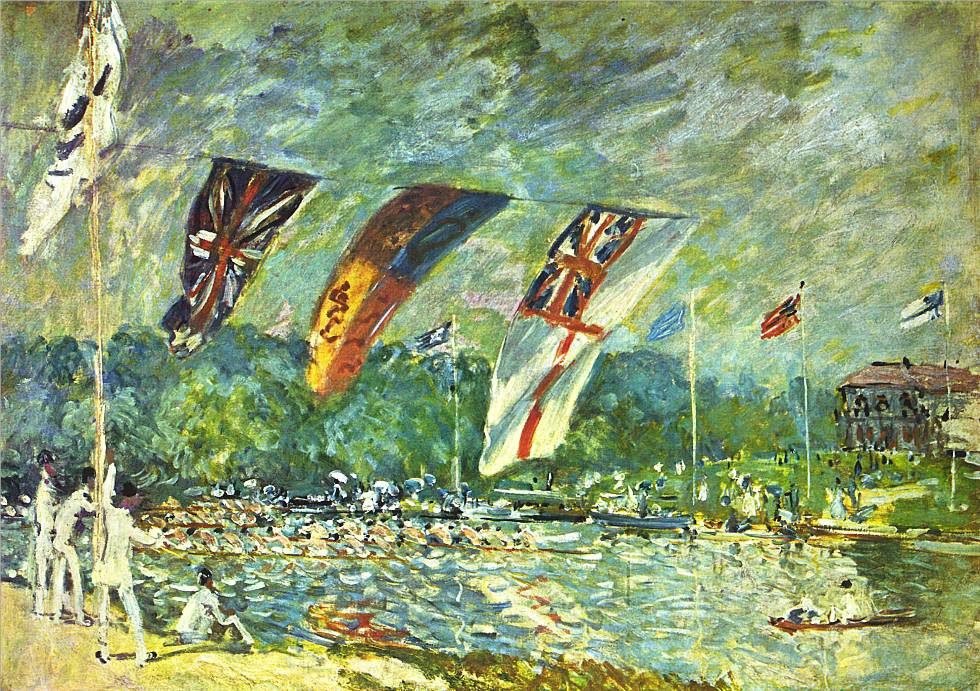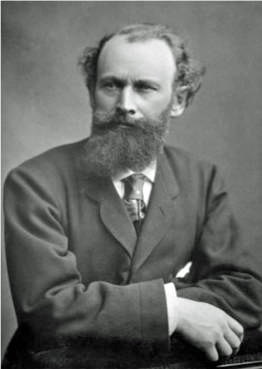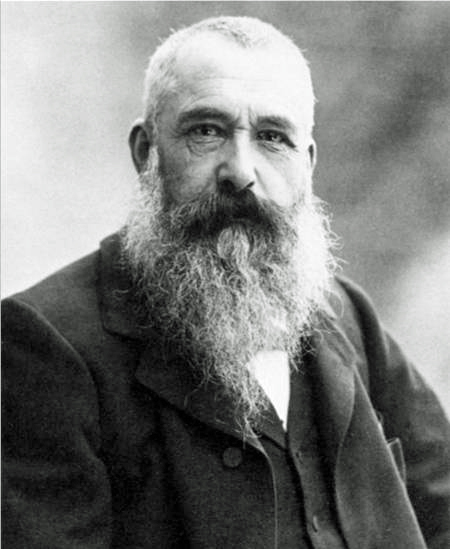Alfred Sisley (1839-1899)

Portrait of Alfred
Sisley by Pierre-Auguste Renoir (ca. 1875)
Alfred Sisley was born in Paris in 1839 to wealthy English
parents. In the early 1860s he studied painting in the studio of
Marc-Charles-Gabriel Gleyre, where he became acquainted with fellow students
Frederic Bazille, Claude Monet and Pierre-Auguste Renoir. Together they came to
be known as the "Four Musketeers." They typically would paint landscapes
in the outdoors (en plein air) rather than in a studio, in order
to realistically capture the transient effects of sunlight. This approach,
innovative at the time, resulted in paintings more colorful and more brightly
painted than the contemporary French artistic establishment was accustomed to
seeing. Consequently, Sisley and his friends endured much negative criticism and
had few opportunities to exhibit or sell their work.
By the late 1860s, he frequented the Café Guerbois and became
part of the circle that had gathered around Edouard Manet. During his
association with that group, he became influenced by the Ideas that came to be
known as Impressionism, In 1870-1871, during the Franco-Prussian war and
the uprising of the Paris Commune, Sisley spent some time in London, where he
met the art dealer, Durand-Ruel. and became part of that dealer's stable
of artists. In the meantime, his father had lost all his money as a result of
the war, and Sisley, with a family to support, was reduced to a state of
poverty, in which he stayed almost until the end of his life.
Sisley now saw himself as a full-time professional painter and
an integral part of the Impressionist group. In all, he exhibited at four of the
Impressionist Exhibitions, in 1874, 1876, 1877 and 1882. Sisley adopted many of
the techniques of Claude Monet. Accordingly, much of Sisley's work during this
period resembles that of Monet. However, Sisley was less of an
experimenter than Monet and tended to work on a smaller scale.
Compared to the other Impressionist, Sisley's works were relatively well received
by the critics. The writer and art critic, Emile Zola, while evaluating the
paintings displayed at the Second Impressionist Exhibition of 1876, noted that:
Sisley ... is a very talented landscape painter who commands better balanced
means than Pissarro ... His painting ... is made up of
wide brush strokes and a delicate coloration.
Note that Zola used two words in evaluating Sisley’s work: "balanced” and
"delicate”. These adjectives were frequently used when describing Sisley's
paintings. Indeed, the opinion of most art historians is that Sisley's
paintings possesses the lyrical detachment and visual purity equal to that of
his great 19th century contemporaries, the Englishman Constable and the
Frenchman Corot.
His paintings convey a generic and almost textbook idea of
perfect Impressionism. His depictions of the water and sky are always
extraordinarily impressive. His concentration on landscape subjects was the most consistent
of any of the Impressionists. Naturally shy, he did not promote himself in
the way that many of his fellow Impressionists did, and it was only towards the
end of his life, when he was dying of cancer, that he began to receive the
recognition that he deserved. In 1899, Sisley died in Moret-sur-Loing,
France at
the age of 59.
Regattas at Moseley (1874)

From July to October of 1874, British expatriate Alfred Sisley painted in
England at Hampton Court and East Moseley on the Thames River west of London.
The above painting, Regattas at Moseley, is oil on canvas measuring 92 cm
x 66 cm. and was completed in the autumn of 1874.
Today it is on display in the Musée d'Orsay in Paris.
This particular painting was so well liked by
Gustave Caillebotte,
that he purchased it for his personal collection. In 1894, the painting
became part of the
Caillebotte Bequest
and was one of the paintings accepted by the French Government.
I believe Regattas at Moseley is a brilliant work of Impressionism
because of its unique design, striking contemporary note and rich handling of
color.
The painting shows the start of a "rowing-eights event" on the Thames
River in England, just opposite a hotel on
Tagg’s Island (on the right side of the painting). Spectators have gathered on
the bank or in launches moored alongside. Many flags and ensigns are on
display, including yachting ensigns, a Union Jack and the black-and-white flag
of the Moseley Boat Club (on the extreme left). White-clad officials are in
attendance, one of them looking at his watch before the start. The traditional
composition of Sisley’s design is countered by the
three flags boldly strung across the sky, a spatial device that places the
entire composition into sharp relief against a delicate green and violet sky.
The overall arrangement of the pictorial elements is quite remarkable.
Below the conventionally placed horizon line of two-thirds sky and one third
land and water, Sisley layers a finely executed design of river, path and
bank with a contrasting vertical arrangement of fences, bollards, mooring posts
and flagpoles. The foreground is open permitting the depiction of
the sandy tow-path in a beautiful peach-ochre color. The overall arrangement
causes the eye of the observer to travel
backwards to the motion of the boats, stimulated by these artificial
demarcations and animated
figures. They work on the surface as spatial markers and accents of color; and
also act as abbreviated markers for this example of organized sport and leisure.
In other words, this painting contains all of the spontaneous elements of a
typically British society at ease.


